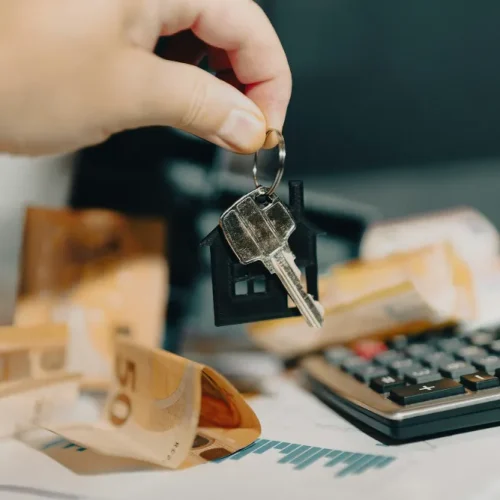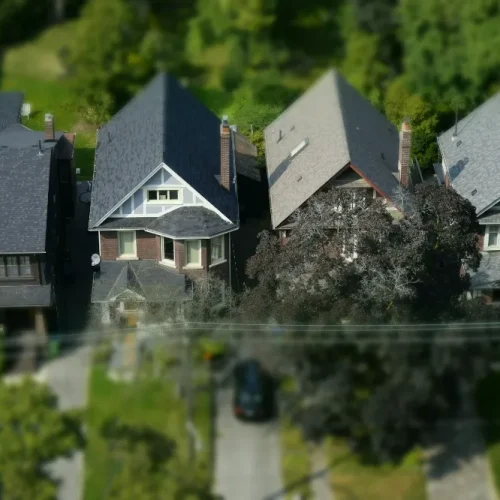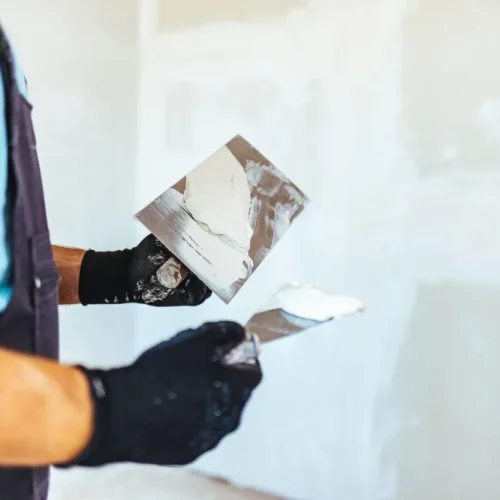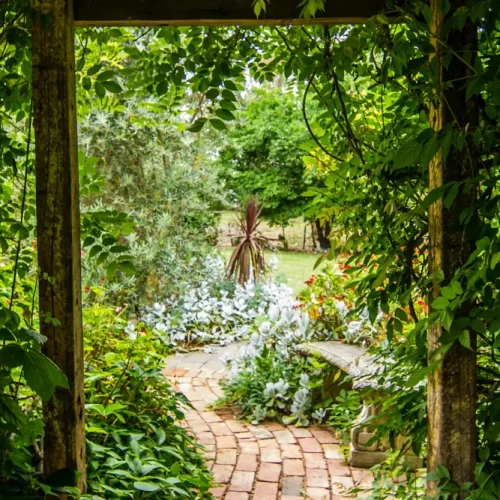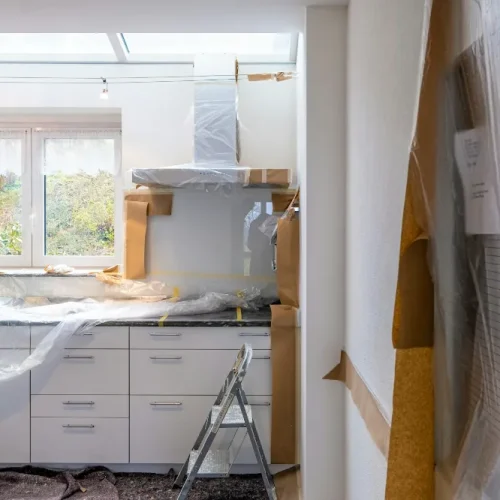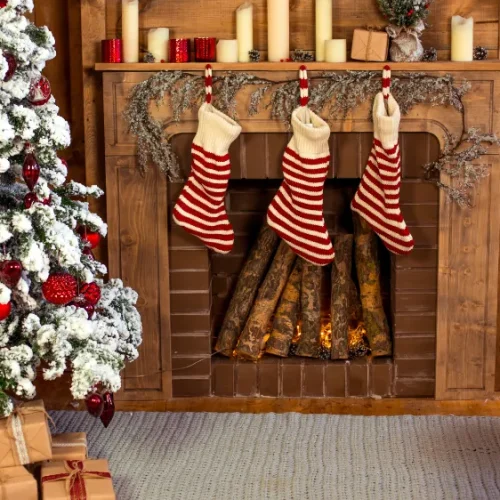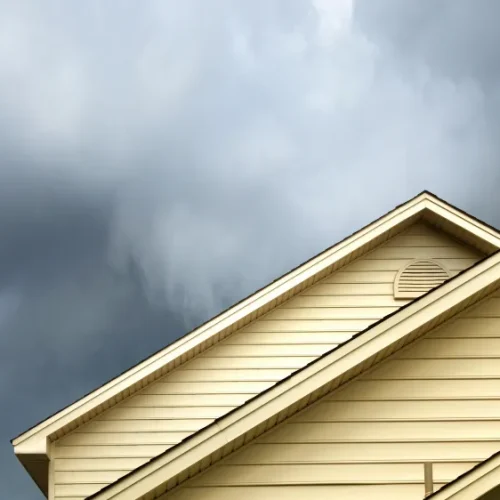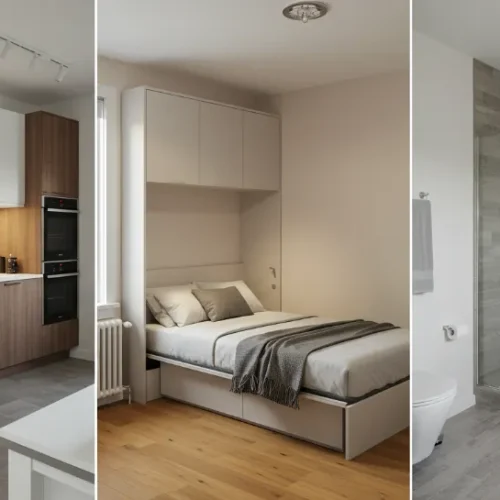I see the foyer as more than a pass-through. It is the threshold where light, height, and movement meet. A well-chosen foyer chandelier works as both bright, dependable foyer lighting and a bold statement light fixture that sets the tone for the rooms beyond. It guides the eye, frames the entry, and signals your design point of view the moment the door opens.
Because this space handles vertical volume, natural daylight, and constant traffic, scale and clarity matter. The right chandelier improves visibility, lifts mood, and calls out details like crisp millwork, iron balusters, and curved stair runs. With thoughtful foyer lighting, I can welcome guests while keeping pathways safe and sightlines clean.
In this guide, I’ll share how to size a foyer chandelier for single- and double-height entries, match fixture style to your decor, choose materials and bulbs for color accuracy and ambiance, and install with safety in mind. My goal is simple: blend aesthetics, performance, and scale so your entry feels cohesive, boosts curb appeal, and carries a clear design thread into the home.
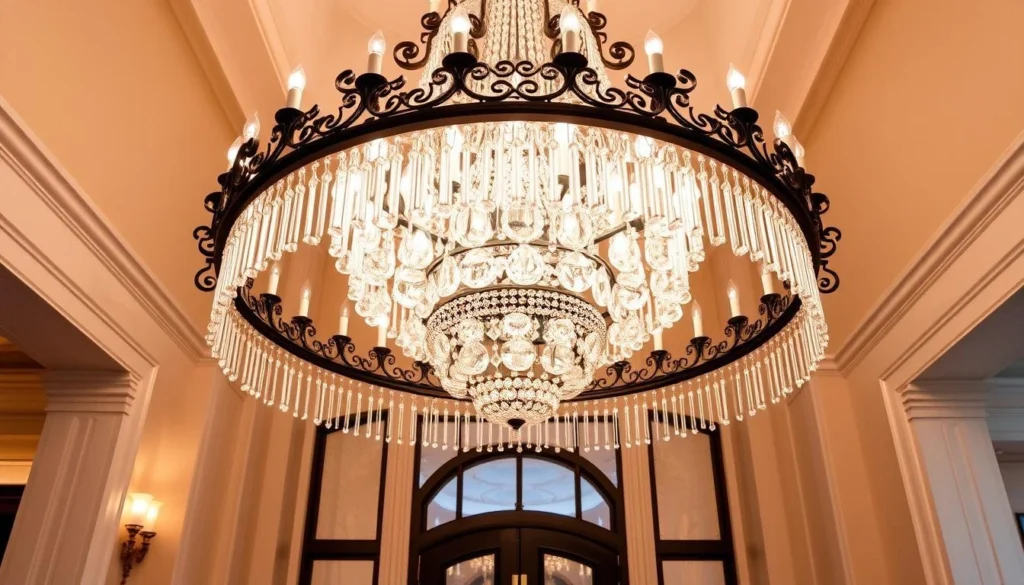
Key Takeaways
- A foyer chandelier should deliver both strong foyer lighting and a memorable statement light fixture.
- Volume, daylight, and foot traffic shape the best size, drop, and materials for the entry.
- Good lighting highlights millwork, staircases, and architectural lines while improving safety.
- Correct sizing changes between single-story entries and double-height foyers.
- Material and bulb choices affect color clarity, warmth, and overall mood.
- Safe installation and proper height ensure long-term performance and visual balance.
Why a Statement Light Fixture Elevates Your Entryway
I want the foyer to do more than greet; it should guide the eye upward and anchor the space. With thoughtful foyer lighting, guests feel oriented the second the door opens, and the mood of the home becomes clear. I use finishes and forms that echo nearby hardware to build continuity that reads as upscale foyer decor without feeling staged.
Creating an Inviting First Impression
I aim for warm, flattering light at 2700K–3000K so skin tones and wood grain look rich. For small to medium entries, I target 1,500–3,000 lumens; for larger or double-height spaces, 3,000–6,000 lumens feels welcoming without glare. A dimmer lets me shift foyer lighting from bright daytime clarity to a soft evening glow.
Multi-source fixtures help avoid harsh shadows on stairs and landings. When I select elegant lighting fixtures, I balance clear glass for sparkle with opal or linen shades to diffuse hotspots. That mix keeps the space calm and refined the moment someone steps inside.
Balancing Style, Scale, and Function
Scale matters as much as style. I choose a diameter that suits the footprint and ceiling height, then ensure the drop leaves comfortable clearance. Shade opacity controls glare, while multi-directional light brightens thresholds and stair treads for safety.
In high-traffic entries, I prefer durable finishes that resist fingerprints and tarnish—think powder-coated black, lacquered brass from brands like Visual Comfort, or brushed nickel by Kichler. These choices support upscale foyer decor that holds up to daily use.
How Elegant Lighting Fixtures Set the Tone for the Home
Lighting telegraphs intent. Traditional crystal from Schonbek signals a formal mood, modern metal frameworks by Tech Lighting suit clean-lined spaces, and transitional silhouettes from Hudson Valley bridge both worlds. Each option frames the narrative before any words are spoken.
I echo the chandelier’s finish with door levers, rail brackets, and balusters to carry the story into adjoining rooms. With curated foyer lighting, the entry reads as a cohesive prologue, and elegant lighting fixtures do the quiet work of defining the home’s character.
Choosing the Right Size and Scale for Grand Entrance Lighting
I start by sizing the fixture to the footprint of the foyer. For a quick estimate, I add the room’s length and width in feet to find an ideal diameter in inches. A 10-foot by 12-foot entry suggests about a 22-inch piece, which keeps grand entrance lighting balanced without overpowering the space.
Hanging height matters. In a single-story foyer, I keep 7 to 7.5 feet of clearance from the floor to the lowest point of a statement light fixture. In two-story entries, I aim for 8 to 10 feet of open clearance over walkways and landings, so the piece reads bold yet safe.
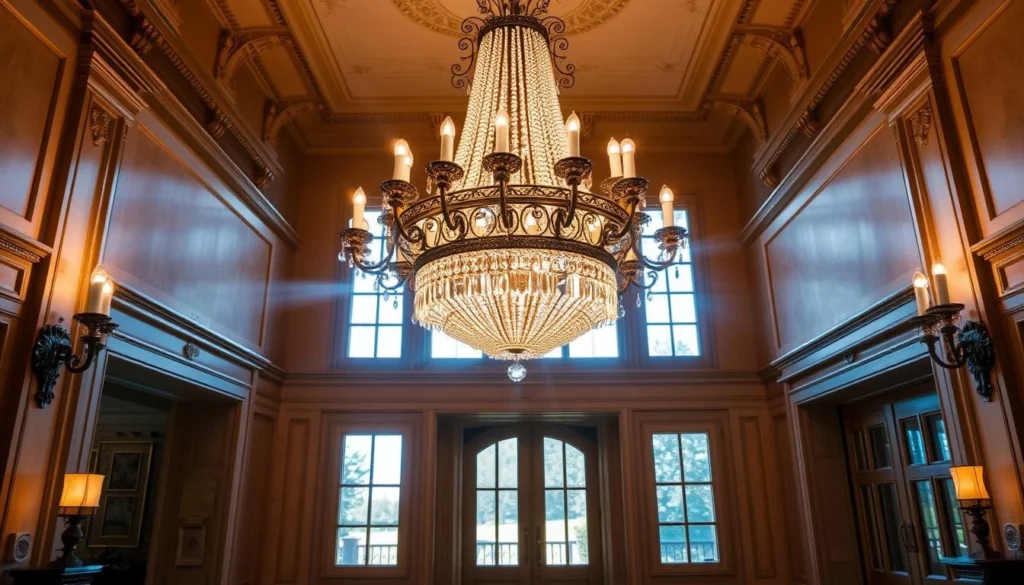
Proportion Guidelines for Two-Story and Single-Story Foyers
For compact foyers, I favor slim profiles that breathe, like an airy open frame from Visual Comfort, rather than a dense crystal drum. The same diameter can feel heavier or lighter depending on design. That nuance lets a contemporary chandelier look refined in tight plans.
In larger foyers, multi-tier designs from Restoration Hardware or a grouped cluster by Tech Lighting offer presence without an extreme diameter. This strategy preserves proportion while delivering true grand entrance lighting that still feels tailored.
Ceiling Height, Fixture Diameter, and Visual Weight
Ceiling height guides drop length. I fine-tune with chain or stem adjustability to hit the ideal sightline and prevent glare. Before finalizing, I check door swings to avoid contact when the statement light fixture hangs near the entry.
Visual weight is just as critical as inches. Open silhouettes read light and modern. Dense crystal or drum shades appear heavier. When I specify a contemporary chandelier, I match its mass to the room’s scale, keeping negative space in the design so the foyer feels open.
Open-Stair and Double-Height Considerations
In double-height spaces, I align the fixture’s vertical midpoint near the second-floor eye line when it’s visible from above. Over stair treads, I maintain at least 48 inches of clearance for comfort and code awareness, ensuring the statement light fixture complements movement.
Clear sightlines define placement. I center on the primary axis from the front door to the living areas—not just the ceiling box. With that alignment, grand entrance lighting and a contemporary chandelier greet guests with balance, scale, and easy flow.
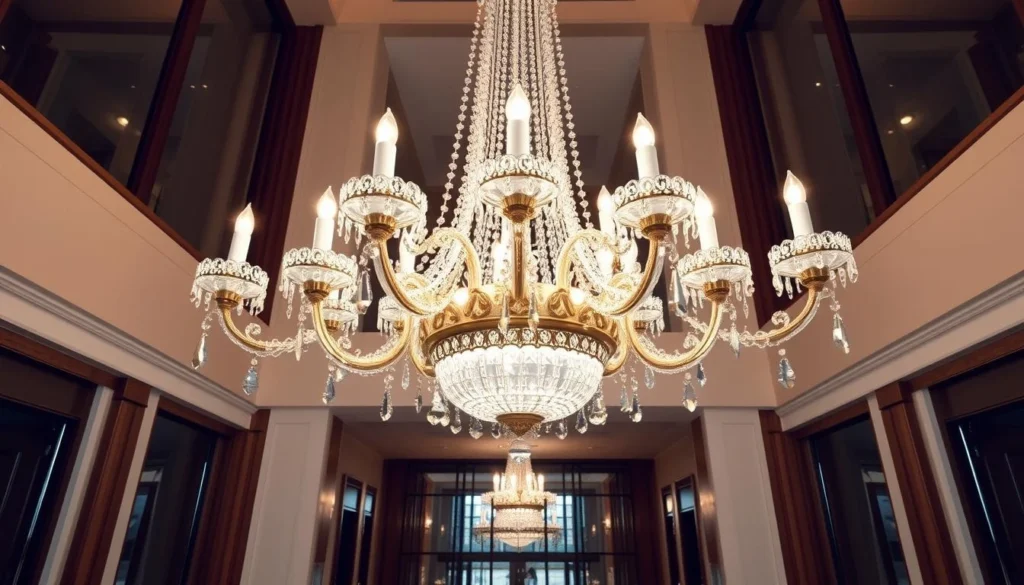
| Style | Best Use Case | Materials | Notable Benefits | Dimming & Rating Tips |
| Sputnik / Linear Branch | Modern entries seeking bold geometry | Lacquered brass, powder-coated steel, glass | High visual impact, wide light spread | Pair with ELV dimmers; confirm dry rating |
| Tiered Crystal Basket | Formal lobbies and grand stairs | Hand-cut crystal, polished nickel | Max sparkle, refractive brilliance | Use Triac dimmers; dry or damp based on drafts |
| Empire | Classic homes with high ceilings | Crystal strands, forged iron | Historic silhouette, vertical emphasis | Triac/ELV as specified; verify canopy coverage |
| Ring / Halo | Minimalist spaces and open stairwells | Anodized aluminum, integrated LED | Clean lines, even diffusion | 0–10V dimming common; check driver specs |
| Lantern Frame | Transitional homes with paneled entries | Powder-coated metal, clear glass | Airy volume, timeless profile | ELV recommended; confirm damp rating if near drafts |
| Art-Glass Globe Cluster | Eclectic foyers needing soft glow | Blown glass, patinated brass | Warm diffusion, sculptural presence | ELV or Triac per sockets; check wattage limits |
When I specify designer ceiling lights for upscale foyer decor, I align finish temperature with hardware and flooring, confirm compatible dimmers, and plan cleaning from day one. That way, the foyer chandelier delivers beauty, longevity, and a welcome that feels curated, not contrived.
Modern Entryway Lights and Contemporary Chandelier Styles
I look for modern entryway lights that keep the foyer open and bright. Slim profiles, geometric frames, and clear negative space help the eye move through the room. A contemporary chandelier with a lean silhouette pairs well with clean moldings and crisp paint.
Mixed metals add depth without clutter. I like brushed brass with matte black for warmth and contrast, or polished nickel with bronze to echo door levers and stair rails. Glass choices matter too. Smoked, opal, or seedy glass softens glare and adds texture that still feels modern.
Clean Lines, Mixed Metals, and Minimalist Forms
When I edit a foyer, I start with structure. Linear rods, open rings, and crisp grids create rhythm. A contemporary chandelier with a thin profile leaves sightlines to art and the second-floor landing.
- Use mixed metals to tie in hinges, pulls, and stair spindles.
- Pick shades in smoked or opal glass to diffuse light without a heavy feel.
- Keep silhouettes airy so modern entryway lights don’t crowd the door swing.
LED Technology for Energy Efficiency and Dimming
Integrated LED raises performance and cuts maintenance. I look for 50,000-hour life and 80–120 lumens per watt to keep energy use low. Smooth dimming with ELV or 0–10V controls lets me shift from bright cleanup light to a soft welcome.
- Verify CRI 90+ so finishes, art, and wood tones look true.
- Match color temperature to your mood—often 2700K–3000K in an entry.
- Confirm the driver and dimmer are compatible before install.
When to Choose Luxury Pendant Lamps vs. Multi-Tier Chandeliers
I reach for luxury pendant lamps in compact foyers, long halls, and asymmetrical plans. Singles or tight clusters give a gallery feel and align with doors or niches. In double-height spaces, a contemporary chandelier with two or three tiers adds presence so the volume does not swallow the light.
- Use modular multi-pendant systems—such as multi-port canopies from Tech Lighting or Sonneman—to cascade down stairwells.
- Choose slim ring forms to span large diameters while keeping sightlines clear.
- Let luxury pendant lamps mark zones, while a tall multi-tier piece commands the central void.
With the right mix of modern entryway lights, a contemporary chandelier can anchor the foyer, while luxury pendant lamps fine-tune scale and flow from the front door to the stair.
Conclusion
As I step back, the essentials are clear. A foyer chandelier should balance style with scale, cast enough lumens, and use warm, dimmable light for comfort and control. Hanging height matters: it must deliver drama while keeping headroom safe on stairs and landings. When I choose modern entryway lights, I look for designs that suit daily life and set a welcoming tone.
Proportion drives every decision. Single-story foyers call for measured diameters and visual lightness, while double-height spaces can carry more volume and layered tiers. I match finishes with door hardware and flooring to keep the palette cohesive. Material choice—crystal for sparkle, glass for clarity, or fabric for softness—lets me dial the mood of grand entrance lighting without clutter.
In the end, careful planning brings it all together. The ideal foyer chandelier anchors the space, harmonizes with floors and hardware, and elevates grand entrance lighting into a daily pleasure. With mindful scale, thoughtful materials, and professional installation, the entry tells the home’s story the moment the door opens.
FAQs
I start by adding the foyer’s length and width in feet to estimate the chandelier diameter in inches. For hanging height, I keep 84–90 inches of clearance in single-story entries and at least 96 inches over landings. In two-story spaces, I position the fixture so its vertical midpoint aligns near the second-floor eye line and ensure it clears door swings and stair treads by 48 inches or more. This balance keeps grand entrance lighting proportional and safe.
I target warm white at 2700K–3000K for flattering skin tones and a welcoming mood. For output, small-to-medium foyers do well with 1,500–3,000 lumens, while larger or double-height volumes need 3,000–6,000 lumens. I always include dimming so I can dial ambience day to night and pair the dimmer with the fixture type—Triac, ELV, or 0–10V for integrated LED.
I pick multi-tier chandeliers for tall, open foyers where vertical presence matters. For compact entries or asymmetrical layouts, I favor luxury pendant lamps or clustered modern entryway lights to keep sightlines open. Modular multi-port systems from brands like Tech Lighting or Sonneman let me cascade pendants down stairwells without visual bulk.
I look for lacquered or powder-coated metals for durability and forged iron for strength. Hand-cut crystal delivers sparkle, while blown glass globes diffuse glare. Matte black and brushed brass hide fingerprints better than polished finishes. I view samples in daylight to match door wood tones and hardware for a cohesive, upscale foyer decor.

